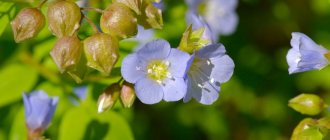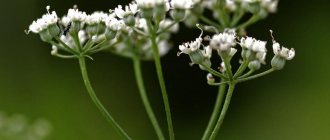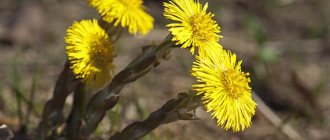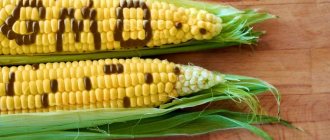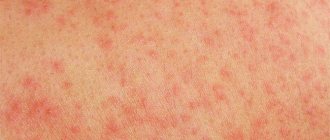Small growths or appendages of plants, algae, lichens and some protists. A unicellular or multicellular plant structure that forms an open extension of the epidermis.
Not to be confused with trichrome.
Flower bud of
Capsicum pubescens
with many trichomes Fossil star-shaped hairs (trichomes), probably oak, from Baltic amber; Image width is about 1 mm.
Trichomes
(/ˈtrɪkoʊmg/ or /ˈtrɪkoʊmg/), from the Greek τρίχωμα (koltun), meaning "hair", are fine projections or appendages of plants, algae, lichens, and some protists . They are varied in structure and function. Examples are hair, glandular hair, scales and papillae. The covering of any type of hair on a plant is hair, and the surface that bears it is called pubescent.
Content
- 1 Algae trichomes
- 2 Plant trichomes 2.1 Hair on the surface
- 2.2 Glandular trichomes
- 2.3 Non-glandular trichomes 2.3.1 Polyphenols
- 3.1 Phytohormones
- 4.1 Classification of Arabidopsis thaliana
- 7.1 Stinging trichomes
Genetically modified smell - present and future?
The benefits and harms of genetically modified plants have been repeatedly discussed at Biomolecule [12], [13], [14], [15]. How can we most effectively use the ability of plants to synthesize unique substances, volatile and non-volatile, which, although called secondary metabolites, in many cases can play the leading role in the play about the future of humanity?
Man has been modifying plants since he first began to cultivate them. Since time immemorial, agriculture has used selection and breeding to develop varieties with certain properties. However, often improving the commercial qualities of fruits (size, uniform ripening, attractive color) or flowers (extension of life when cut) leads to a deterioration in taste and loss of natural smell, which negatively affects the number of consumers.
The deterioration of the taste and aroma of tomatoes entering the consumer market turned out to be such a commercially important problem that very significant funding was allocated to its study. Scientists from seven research laboratories in America, China and Israel have teamed up to investigate why tomato breeding has significantly altered its “odorant profile.” They conducted a comparative genomic analysis of almost 400 different varieties of tomatoes, as well as their wild ancestors, and at the same time identified the chemical components that people associated with the most attractive smell and taste. This large-scale study resulted in a list of mutations that change the taste and smell of tomatoes. Of these, about 20 are worthy of close attention, and can become targets for breeding efforts to create aromatic and sweet tomatoes [16], [17].
Many decorative flowers lost their characteristic aroma during the selection process. For example, garden roses (Rosa hybrida) have a pleasant aroma, the chemical composition of which includes the entire spectrum of plant volatiles: terpenes, phenylpropanoids and fatty acid derivatives. However, most varieties intended for cutting and retaining freshness for a long time in the form of bouquets in a vase have practically lost the classic “rose aroma”. Unfortunately, in this case, roses are much less fortunate than tomatoes, and there is no complete genome sequencing program for them, and there are no reliable transformation methods, which significantly complicates any targeted manipulation of the genome. As a result of partial sequencing of the rose transcriptome, it was possible to identify a number of genes encoding enzymes for the biosynthesis of volatile substances [18], [19]. However, until recently it was not clear, for example, exactly how the biosynthesis of geraniol and other monoterpenes, which are the main component of the characteristic aroma of roses, occurs in roses, and only in 2015 it was possible to trace the path of biosynthesis of geraniol in roses [20]. So the dream of returning roses to their wonderful scent [9] has not yet come true in practice, and in general there are very few transgenic roses (a transgenic blue rose is known, into which it was possible to insert the violet gene responsible for the biosynthesis of dephinidin, an anthocyanin that gives flowers blue or violet color [21]).
There are examples of successful influence on the odor composition of some plants using the genes of other plants. Overexpression of strawberry linalool/neridol synthase in transgenic Arabidopsis plastids produced a plant that secretes large amounts of linalool and thus repels archid pests (Mysus persicae) [11]. With overexpression in petunia of a gene cloned from roses—acetyltransferase (an enzyme that converts alcohol into acetate), the content of volatile acetates released by transformed plants changed [22]. There are also cases of somewhat unexpected transformations of volatile molecules when plants are transformed with genes from plants with a different “molecular context”. The monoterpene linalool is formed from isoprene under the action of the enzyme linalool monoterpene synthase and is one of the important components of odor. The introduction of the linalool monoterpene synthase gene from Clarkia into the petunia genome did not lead to a change in the content of linalool secreted by the transgenic plant. It turned out that linalool is formed in petunia, but undergoes a glycosylation reaction, and glycosylated linalool is not volatile [23]. In the smell of cloves transformed with the same gene, the amount of linalool increased and amounted to 10% of the total amount of volatile substances released [24]. The same thing happened with the germacrene D sesquiterpene synthase gene, cloned from roses and transformed into petunia. Natural germacrene D is present in wild-type petunia flowers, which confirms the presence of the necessary substrate. However, no significant increase in the concentration of released germacrene D was found in transformed plants [18].
Manipulations with smell can serve not only for direct human pleasure in the form of delicious tomatoes and fragrant flowers. In the future, it will be possible to entrust the protection of agricultural plants from pests to plants with a specially selected scent. In response to pests, some plants secrete a mixture of different substances that can consist of more than 200 different components. These substances can poison, repel and deter insect pests, and also attract entomophages (insects that destroy pests). These data allow us to hope that by influencing the spectrum of volatile compounds of cultivated plants, it is possible to increase their resistance to pests without the use of expensive and environmentally harmful pesticides. Moreover, there is probably no need to introduce genes responsible for the synthesis of repellent molecules into the entire population of cultivated plants, since it is with the participation of volatile molecules that information is transferred between plants, and the appearance of protective substances in some plants causes a corresponding protective response in neighboring individuals ( rice.  [7].
[7].
Figure 8. An imaginary field with plant “beacons”. Several transgenic plants, engineered to continuously synthesize and release defense signals, can influence their non-transgenic neighbors and thereby increase their ability to resist attacking herbivores and pests.
[7]
But for now, such fields are only possible in dreams. From the above examples, it becomes clear that it is not so easy to influence in a targeted manner the spectrum of volatile substances released by a plant. The biosynthesis of each odor component is a multi-step process carried out by various enzymes. And even if it is possible to achieve overexpression of the genes responsible for the production of a certain volatile substance, the further fate of each new molecule will completely depend on the general biochemical context of the recipient plant: instead of becoming a new volatile component of the smell, it can become a substrate for further transformations, lose its “volatility” and turn into something completely different.
Algae trichomes[edit]
In some, usually filamentous algae, the terminal cell develops into an elongated hair-like structure called a trichome. [ example needed
] The same term is applied to such structures in some cyanobacteria, such as
Spirulina
and
Oscillatoria
.
Cyanobacterial trichomes can be unshelled, as in Oscillatoria
, or sheathed, as in
Calothrix
.
[1] These structures play an important role in preventing soil erosion, especially in cold desert climates. [ citation needed
] The thread-like sheaths form a strong, sticky network that helps maintain soil structure.
How to determine the maturity of marijuana by trichomes?
Trichome maturity is the most important indicator that helps a grower determine when to harvest. The maturation of marijuana trichomes is indicated by a change in their color. The droplets on immature trichomes are as clear as dew. As they ripen, the color of the caps changes. It first becomes cloudy and milky white, and then acquires an amber-orange hue.
To obtain maximum high-potency marijuana, you need to start harvesting when about 80% of the trichomes have lost their clarity and become milky white. At this time, the level of THC is already quite high, but the content of other cannabinoids is still minimal.
Growers who want the powerful relaxing effects of marijuana should harvest the buds at the peak stage of ripening, when they turn amber. It is these trichomes that release the largest amount of THC, as well as other cannabinoids - CBD, CBN, which provide a sedative and analgesic effect.
If the crop is not harvested in time when the trichomes are amber, the THC levels in the marijuana will gradually decline. This is due to the oxidation of the psychoactive cannabinoid, which, after peak maturation, is converted into CBN.
Is it possible to harvest when some of the trichomes are white? The answer to this question will largely depend on the preferences of the grower and the objective growing conditions. If the grower prefers an energetic sativa effect, then you can start harvesting when at least half of the trichomes of the bush have become cloudy.
There are critical situations when early harvesting of marijuana is necessary - for example, if cold weather and prolonged rains suddenly begin outdoors. The grower must evaluate the risk based on the conditions. If the likelihood of losing the harvest is high, it is better to collect the buds earlier than to wait for the peak of ripeness and end up with nothing.
Plant trichomes[edit]
Sticky trichomes from the carnivorous plant, Cape sundew
with captured insects, contain proteolytic enzymes.
Trichomes on cannabis
, rich in cannabinoids.
Trichomes on the surface of a Solanum scabrum
Trichomes on the petiole of a Solanum quitoense
Scanning electron micrograph of a trichome on an Arabidopsis thaliana
. The structure is unicellular.
Plant trichomes have many different characteristics that vary between plant species and the organs of an individual plant. These features influence the subcategories into which trichomes are placed. Some defining features include:
- Unicellular or multicellular
- Erect (straight, with little or no branching), spiral (corkscrew-shaped), or hooked (curved at the apex) [2]
- Presence of cytoplasm
- Glandular (secretory) versus eglandular
- Sinuous, simple (unbranched and unicellular), squamous, stellate (star-shaped) [3]
- Adaxial or abaxial, depending on whether the trichomes are present, respectively, on the upper (adaxial) or lower (abaxial) surface of a leaf or other lateral organ.
In the model organism C. salvifolius
There are more adaxial trichomes present on this plant because this surface is exposed to more UV and solar radiation than the abaxial surface. [4]
Trichomes can protect the plant from a variety of harmful influences, such as ultraviolet radiation, insects, transpiration, and frost intolerance. [5]
Hair on the surface[edit]
Trichomes
on plants they are various kinds of epidermal outgrowths.
The terms ps
or
spines
refer to growths that involve more than the epidermis.
This distinction is not always easy to apply (see One-minute tree). There are also non-trichomatous
epidermal cells that protrude from the surface.
[ example needed
]
A common type of trichome is hair
.
Plant hairs can be unicellular or multicellular, branched or unbranched. Multicellular hair may have one or more layers of cells. The branched hairs may be dendritic
(tree-like) as in the kangaroo paw (
Anigozanthos
),
tufted
, or
stellate
(star-shaped) as in
Arabidopsis thaliana
.
Another common type of trichome is scaly
or
peltate hair
, which has a lamellar or shield-like group of cells attached directly to the surface or found on some stem.
Common examples are the leaf scales of bromeliads such as pineapple, rhododendron
and sea buckthorn (
Hippophae rhamnoides
).
Any of the different hair types can be glandular
producing any secretion, such as the essential oils produced by mints and many other members of the family Lamiaceae.
Many terms are used to describe the appearance of plant organs such as stems and leaves, with reference to the presence, shape and appearance of trichomes. Examples include:
- glabrous
,
naked
- without hairs or trichomes; smooth surface - hairy
- rough hairy - hispid
- bristly hairs - articular
- simple multicellular single-row hairs - fluffy
- with an almost furry covering of long hairs - hairy
- covered with long, straight, soft, loose or erect hairs - puberulent
- finely pubescent; with thin, short, usually straight hair - pubescent
- with hairs or trichomes of any type - strigillose
- small-strichose - strigosa
- straight hairs directed more or less in the same direction as along the edge or midrib - tomentellous
- finely felt - felt
- covered with thick, matted, fluffy hairs - villosulous
- small villi - villous
- long soft hairs, often curved but not tangled
The size, shape, density and arrangement of hairs on plants vary greatly between species and even within the same species on different plant organs. Several main functions or advantages of having superficial hairs can be listed. It is likely that in many cases, hair interferes with feeding in at least some small herbivores and, depending on the rigidity and irritability of the palate, large herbivores as well. Hairs on plants growing in frost-prone areas protect living surface cells from frost. In windy locations, hairs interrupt the flow of air across the plant's surface, reducing transpiration. The dense coverings of hair reflect sunlight, protecting the more delicate tissue underneath in hot, dry, and exposed habitats. Additionally, in areas where most of the available moisture comes from fog droplets, hair seems to enhance this process by increasing the surface area on which water droplets can accumulate. [ citation needed
]
Glandular trichomes[edit]
Glandular trichomes have been widely studied, although they are only found on about 30% of plants. Their function is to secrete metabolites for plants. Some of these metabolites include:
- terpenoids, which perform many functions in the plant related to growth and development [6]
- phenylpropanoids, which are involved in many plant metabolic processes such as secondary metabolites, stress response, and act as mediators of plant-environment interactions [7]
- flavonoids
- methyl ketones
- acyl sugar [8]
Nonglandular trichomes[edit]
Nonglandular trichomes are important for protecting plants from UV radiation. [4]
Model plant Cistus salvifolius
found in areas of high light stress and poor soil conditions along the Mediterranean coast. It contains nonglandular, stellate and dendritic trichomes, which have the ability to synthesize and store polyphenols that influence radiation absorption and plant desiccation. These trichomes also contain acetylated flavonoids, which can absorb UVB, and non-acetylated flavonoids, which absorb longer wavelengths of UVA. In non-glandular trichomes, the only role of flavonoids is to block the shortest wavelengths to protect the plant, which is different from glandular trichomes. [4]
Polyphenols[edit]
It was found that nonglandular trichomes of the genus Cistus
contain ellagitannins, glycosides and kaempferol derivatives. The main purpose of ellagitannins is to help adapt during times of nutrient-limiting stress. [4]
Types of marijuana trichomes
There are three types of cannabis trichomes, which differ from each other in appearance and structure:
- Bulbous - bulbous . This type of trichome is one of the smallest - their size is 15-30 microns. A single trichome consists of a head and a stalk, which contain only a few cells. Bulbous can only be examined in detail through a microscope with a magnification of 40-60 times. Bulbous trichomes cover all visible parts of the plant. Between the cutaneous part and the head, a resin with cannabinoids and other active substances is produced. Resin droplets press on the membranes, and thus nipple-like outgrowths appear on the trichomes.
- Capitate-Sessile - capitate or capitate petiolate. These trichomes can be seen with the naked eye, but for a detailed examination a microscope will be useful - the size of capitate trichomes is 25-100 microns. Most of the trichome is occupied by the head, which has a spherical shape. During the flowering period, when the trichomes actively secrete resin, their heads swell and become larger - so much so that the short stem is not visible from under them. This is where the name comes from. Trichomes of this species can be seen in large quantities on the buds and small leaves of plants.
- Capitate-Stalked – capitate-footed or capitate-petiolate. The most numerous variety of trichomes, which, during the transition of bushes to flowering, cover the stems, leaves, buds and other above-ground parts of plants. There are especially many of these trichomes on the calyxes and colas of female bushes. In terms of their structure, capitate-footed trichomes are a more complex version of capitate-petiolate trichomes. They have a fairly long stem on which a ball head with resin is located. These trichomes can be seen without a microscope - a magnifying glass will be enough for a detailed examination, since they have a size of 150-500 microns.
Trichome and root hair development[edit]
Both trichomes and root hairs, the rhizoids of many vascular plants, are lateral extensions of a single cell of the epidermal layer. Root hairs are formed from trichoblasts
, hair cells of the plant root epidermis. Root hairs vary from 5 to 17 micrometers in diameter and from 80 to 1500 micrometers in length (Dittmar, cited in Esau, 1965). Root hairs can live for two to three weeks and then die off. At the same time, new root hairs are constantly being formed at the apex of the root. Thus, the coverage of the root hair remains unchanged. Therefore, it is clear that replanting must be done carefully, because the root hairs are mostly removed. This is why planting can cause plants to wilt.
Red trichomes on a rose stem
The genetic control of trichome and root hair patterning has similar control mechanisms. Both processes involve a core of associated transcription factors that control the initiation and development of epidermal overgrowth. Activation of genes encoding specific protein transcription factors (named GLABRA1 (GL1), GLABRA3 (GL3) and TRANSPARENT TESTA GLABRA1 (TTG1)) are major regulators of cell fate for the formation of trichomes or root hairs. [9]When these genes are activated in the epidermal cell of a leaf, trichrome formation is initiated in that cell. GL1, GL3. and TTG1 also activate negative regulators that serve to inhibit trichrome formation in neighboring cells. This system controls the distance between trichomes on the leaf surface. Once trichomes develop, they may divide or branch. [10] In contrast, root hairs branch only occasionally. During the formation of trichomes and root hairs, many enzymes are regulated. For example, just before root hair growth, there is increased phosphorylase activity. [eleven]
Much of what scientists know about trichome development comes from the model organism Arabidopsis thaliana
, because their trichomes are simple, unicellular and nonglandular. The developmental pathway is regulated by three transcription factors: R2R3 MYB, basic helix-loop-helix, and WD40 repeat. Three groups of TFs form a trimeric complex (MBW) and activate the expression of downstream products, which activates trichome formation. However, only MYB acts as an inhibitor by forming a negative complex. [12]
Phytohormones [edit]
Plant phytohormones influence the growth and response of plants to environmental stimuli. Some of these phytohormones are involved in trichome formation, including gibberellic acid (GA), cytokinins (CK), and jasmonic acid (JA). [12]
GA stimulates trichome growth by stimulating GLABROUS1 (GL1).
However, the SPINDLY and DELLA proteins suppress the effects of GA, so less of these proteins create more trichomes.
Some other phytohormones that promote trichome growth include brassinosteroids, ethylene, and salicylic acid. This was realized by conducting experiments with mutants that have virtually no each of these substances. In each case, there was less trichome formation on both plant surfaces, as well as abnormal formation of the trichomes present. [12]
When do marijuana trichomes appear?
Trichomes appear on plants at the very beginning of flowering, when female and male buds begin to form from the preflowers. The maturation of “girl” buds is largely determined by trichomes. At the early stage of flowering, miniature glands gradually cover all above-ground parts of the bushes. Trichomes grow most on the calyxes and buds of the main cola, as well as on the side colas.
The rate of trichome formation and their number is influenced primarily by the genetics of the variety, and secondly by the growing conditions. The maximum level of THC can be obtained when growing powerful varieties, if the grower can create optimal parameters for the bushes of temperature, humidity, watering and fertilizing.
It is also important to understand that the level of THC is not always determined by the number of trichomes. Many varieties have few trichomes, but the concentration of psychoactive components in the resin is very high.
Taxonomy implications[edit]
The type, presence, absence and location of trichomes are important diagnostic characters in plant identification and plant taxonomy. [13] In forensic examination, plants such as Cannabis sativa,
can be identified by microscopic examination of trichomes. [14] [15] Although trichomes are rare in fossils, trichome bases are found regularly, and in some cases their cellular structure is important for identification.
Classification of Arabidopsis thaliana trichomes[edit]
Arabidopsis thaliana trichomes
are divided into aerial, epidermal, unicellular and tubular. [16]
Can a cannabis plant have no trichomes? Yes!
- Firstly, at the vegetative stage, plants of all varieties do not have them at all.
- Secondly, there are practically no trichomes on male cannabis plants.
- Thirdly, there are few trichomes on wild cannabis, which breeders have not worked on.
The life cycle of trichomes coincides with the ripening period of cannabis. Having appeared, trichomes begin to release aromatic terpenes and cannabinoids, the concentration of which on unpollinated bushes increases every day and reaches its peak at the late flowering stage - the maximum content. After this point, THC levels can drop steadily, which is why timing your harvest is especially important!
Implications for plant molecular biology[edit]
In the model plant Arabidopsis thaliana
Trichome formation is initiated by the GLABROUS1 protein. Knockouts of the corresponding gene lead to the appearance of naked plants. This phenotype has already been used in genome editing experiments and may be of interest as a visual marker for plant research to improve gene editing techniques such as CRISPR/Cas9. [17] [18] Trichomes also serve as models for cell differentiation as well as patterning in plants. [19]
Bud and stem of Stylidium
with trichomes that can trap and kill insects.
How to collect the smell?
To study the chemical composition of odor, various chromatographic methods are mainly used. Gas or liquid chromatography in combination with mass spectrometry is especially often used.
If in Ancient Egypt oil extraction methods were used to fix the smell, then in the modern version alcohol, chloroform and some other organic substances are used as a solvent. A significant disadvantage of the resulting extract is that, in addition to odorous substances, other compounds enter it, and in concentrations exceeding the concentrations of volatile substances by tens and sometimes hundreds of times. Analyzing such a mixture by chromatographic methods is a very difficult task.
To determine the composition of the odor, good methods allow you to capture and concentrate highly volatile substances - the so-called headspace analysis. For example, the solid-phase microextraction ( SPME ) method takes advantage of the odor-absorbing properties of some polymers. A thin rod of such a polymer material (Fig. 6a and 6c) is placed in a tightly closed vessel along with the plant and kept for 10–30 minutes (it is advisable to place the entire plant in the vessel, since cutting a leaf or flower is stressful, and the composition of the released substances may even change within a short incubation time). Then the rod is removed and placed in the injector of a chromatographic column, where it is heated to a temperature of 200–250 °C. When heated, the molecules adsorbed by the polymer are released and enter the column, where they undergo fractionation in one way or another (Fig. 6e). This method is good for its high sensitivity, as well as speed and ease of use. However, it also has certain disadvantages: due to the selectivity of the adsorption process, it is impossible to judge the quantities of components in the analyzed mixture; In addition, completely foreign molecules can be adsorbed onto the polymer, for example, those that were in the room where the analysis was carried out [9].
Figure 6. Solid phase microextraction method. a — SPME rod. Different colors of caps - different polymer materials and thickness of the cores. b — A tobacco leaf and the formula of the germacrene molecule D. c — An SPME rod is inserted into a tightly closed vessel with a plant sample, onto which volatile molecules are absorbed. e — Result of fractionation of the mixture that entered the mass spectrometer from the SPME column.
[10]
The name of another method is translated from English as “trapping”. The method is that the plant or some part of it is placed in a closed vessel, through which air is slowly pumped using a pump (Fig. 7). Air is supplied through a filter. The odor is adsorbed on another filter, which is located at the outlet of the vessel. Special polymers are used to collect odors. After the experiment is completed, the polymer is washed with a solvent (for example, hexane) and thus a “pure odor extract” is obtained. This method makes it possible to judge not only the qualitative, but also the quantitative composition of the odor, as well as to compare the composition of odors emitted by the same plant at different periods of time (for example, day and night).
Figure 7. This is how a trap is designed to collect Arabidopsis scent.
[11]
Defense[edit]
Plants may use trichomes to deter herbivore attacks through physical and/or chemical means, such as in the specialized, stinging hairs of Urtica
(nettle), which deliver inflammatory chemicals such as histamine.
Research on trichomes has focused on plant defenses that result from repelling herbivores (Brookes et al., 2016). [22] However, some organisms have developed mechanisms to counteract the effects of trichomes. Heliconius charithonia
larvae , for example, are able to physically release themselves from trichomes, bite off trichomes, and can form silken blankets to better navigate leaves. [23]
Stinging trichomes[edit]
Stinging trichomes vary in their morphology and distribution between species, but similar effects on large herbivores imply that they perform similar functions. Higher densities of stinging trichomes were observed in regions exposed to herbivory. Urtica _
The stinging trichomes cause a painful sensation that lasts for several hours upon human contact. This sensation is considered a defense mechanism against large animals and small invertebrates and plays a role in protective supplementation through the secretion of metabolites. Research suggests that this sensation involves the rapid release of a toxin (such as histamine) upon contact and penetration through the globular tips of said trichomes. [24]
Competition "bio/mol/text"-2017
This work was published in the “Free Topic” category of the “bio/mol/text” competition 2017.
The general sponsor of the competition is: the largest supplier of equipment, reagents and consumables for biological research and production.
The sponsor of the audience award and partner of the “Biomedicine Today and Tomorrow” nomination was.
"Book" sponsor of the competition - "Alpina Non-Fiction"
Plant aromas have long been firmly established in human everyday life. Any mixture of volatile substances becomes a smell only when it affects the olfactory organs. There is active research into the way in which a mixture of chemicals transmits signals to the brain about the nature of the smell [1], [2], [3]. And although the secret of smell has not yet been fully discovered, in practice, humanity has been widely using plant aromas for a long time. Cosmetics and perfumes, cooking and household chemicals exploit the human olfactory ability and use odors pleasant to the human nose to increase demand for their products. Ancient people attributed magical or healing powers to certain smells, and they were used by shamans and priests. Today, aromatherapy from an ancient art is gradually but surely turning into a science and being introduced into modern medicine [4]. The taste perception of food in humans depends 90% on the sense of smell [5]. Therefore, plants that have a pleasant smell to humans are in demand, and have long become the object of close attention of scientists who are trying to understand and learn how to control the processes of biosynthesis of volatile substances.
People tend to pay attention to the scent of flowers, but scent molecules are synthesized by cells that can be found not only in various parts of the flower and fruit, but also in the leaves, roots and stems. trichomes develop from epithelial cells - specialized organs that synthesize and secrete various secondary metabolites.
